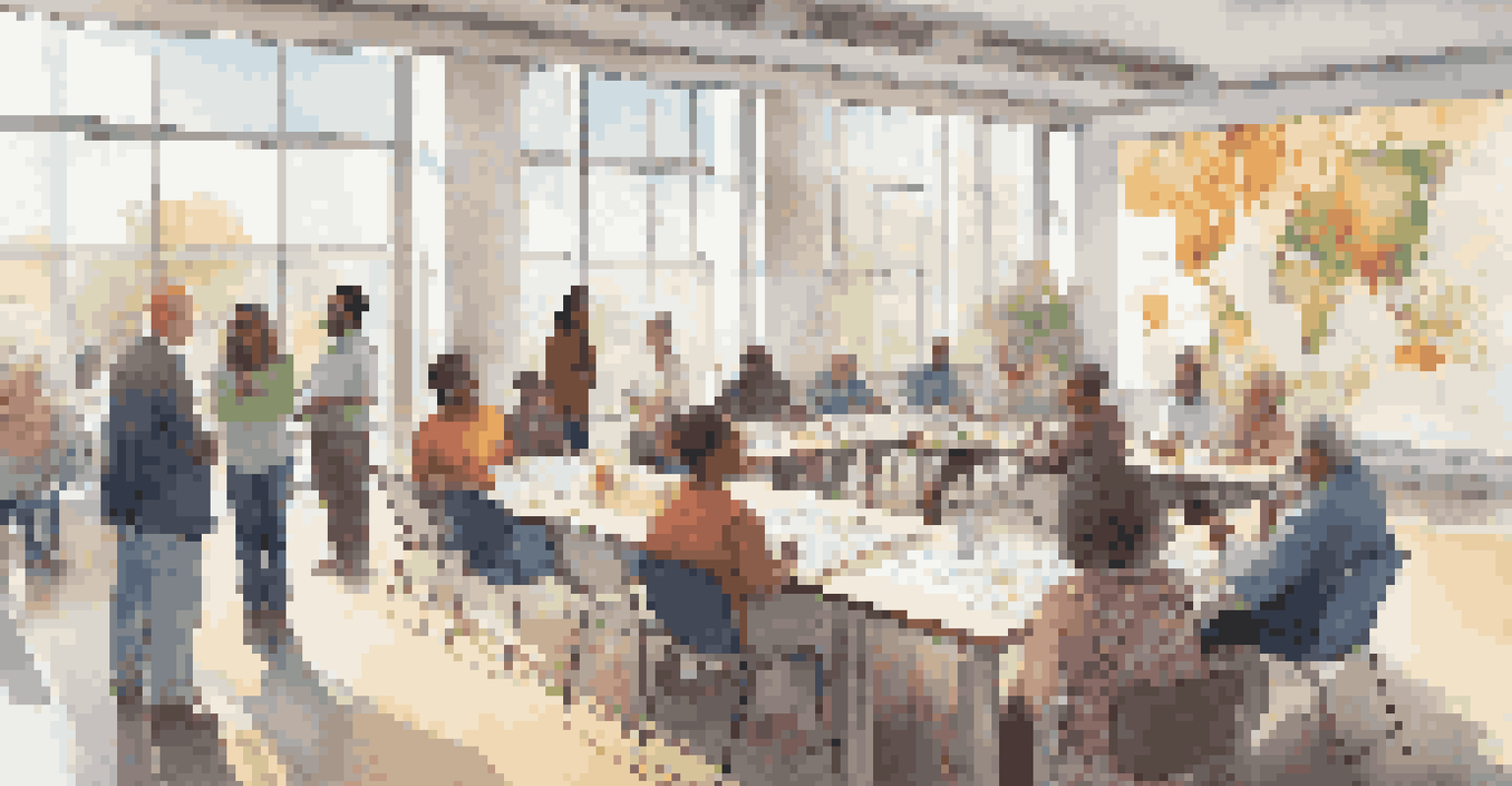The Future of Zoning: Adapting to Change and Innovation

Understanding Modern Zoning: A Brief Overview
Zoning, at its core, is the regulation of land use, dictating how properties can be utilized. Historically, zoning has been a tool to control urban growth and maintain order in communities. However, as cities expand and evolve, traditional zoning models often struggle to keep pace with the changes in demographics and technology.
Zoning is not just about controlling where things go; it's about shaping the future of our communities.
In essence, zoning laws can either hinder or foster innovation, impacting everything from housing affordability to environmental sustainability. As we navigate the complexities of urban life, it becomes crucial to rethink these regulations to better serve our communities. By understanding the current landscape, we can begin to envision what future zoning might look like.
This evolving landscape of zoning is not just about making space for new buildings; it's about creating vibrant, inclusive communities. With the rise of mixed-use developments and the need for flexible spaces, the traditional zoning paradigms are being challenged like never before.
The Impact of Technology on Zoning Regulations
Technology is reshaping every aspect of our lives, and zoning is no exception. From smart city initiatives to advanced data analytics, technology provides new tools for city planners and policymakers to craft more effective zoning regulations. For instance, geographic information systems (GIS) allow for detailed mapping and analysis of land use, helping to identify trends and inform decisions.

Moreover, the rise of remote work and digital nomadism has prompted a reevaluation of zoning spaces traditionally reserved for commercial use. With more people working from home, the demand for mixed-use spaces that combine residential and commercial functions is increasing. This shift encourages municipalities to adapt their zoning laws to accommodate these emerging needs.
Zoning Must Evolve with Communities
Modern zoning regulations need to adapt to changing demographics, technology, and urban needs to create inclusive and resilient communities.
As we embrace technology, cities can become more responsive and adaptable to the changing needs of their residents. This integration of tech into zoning practices not only enhances efficiency but also fosters community engagement, allowing residents to have a say in how their neighborhoods evolve.
Adapting Zoning to Address Climate Change
Climate change poses significant challenges for urban planning, making it essential for zoning regulations to evolve. By integrating sustainability into zoning laws, cities can promote eco-friendly practices and reduce their carbon footprint. This can include designating certain areas for green spaces, implementing stricter energy efficiency standards, or allowing for renewable energy installations.
The best way to predict the future is to create it.
Additionally, zoning can be used as a tool for resilience, helping communities prepare for climate-related challenges such as flooding or heatwaves. For example, areas prone to flooding might be zoned to allow for permeable surfaces or elevated structures, reducing risk and promoting safety. These proactive measures can significantly impact how cities mitigate the effects of climate change.
Ultimately, adapting zoning regulations to address climate change not only protects the environment but also enhances the quality of life for residents. By fostering sustainable development, cities can create healthier, more resilient communities that thrive in harmony with nature.
Inclusive Zoning: Supporting Affordable Housing
One of the pressing issues in urban areas today is the lack of affordable housing. Inclusive zoning aims to address this challenge by requiring developers to include a percentage of affordable units in new residential projects. This approach helps to create mixed-income communities and prevents segregation based on economic status.
Moreover, inclusive zoning can encourage diverse neighborhoods where people from different backgrounds can live and thrive together. By fostering a sense of community, cities can enhance social cohesion and reduce inequalities. A well-planned inclusive zoning strategy can make a significant difference in tackling housing shortages.
Technology Enhances Zoning Practices
The integration of technology in zoning, such as GIS and smart city initiatives, empowers better decision-making and fosters community engagement.
However, implementing inclusive zoning requires careful consideration and collaboration among stakeholders, including developers, community members, and policymakers. It’s not just about building homes; it’s about creating vibrant, diverse communities that reflect the values and needs of all residents.
The Role of Community Engagement in Zoning Changes
Community engagement is vital when it comes to zoning changes. Residents often have valuable insights and perspectives that can inform better decision-making. By involving the community in the planning process, cities can ensure that zoning regulations reflect the needs and desires of those who live there.
Public forums, workshops, and surveys are effective tools for gathering input and fostering dialogue between city officials and residents. This collaborative approach not only enhances transparency but also empowers communities to take an active role in shaping their neighborhoods. When people feel heard, they are more likely to support zoning initiatives.
Furthermore, successful community engagement can lead to innovative solutions that might not have been considered otherwise. By tapping into the collective wisdom of residents, cities can develop zoning regulations that are more adaptable and responsive to changing needs.
Innovative Zoning Models: Lessons from Around the World
As cities worldwide grapple with the challenges of urbanization, innovative zoning models are emerging as promising solutions. For example, some cities have adopted form-based codes that prioritize the physical form of buildings rather than their specific use. This flexibility allows for more creative and diverse developments that can adapt over time.
Another fascinating approach is the concept of 'zoning by design,' where communities focus on the desired outcomes of developments rather than strict regulations. This method encourages collaboration among architects, planners, and residents to create spaces that truly reflect the community's vision.
Inclusive Zoning Supports Affordability
Implementing inclusive zoning can address affordable housing shortages by requiring a mix of income levels within residential developments.
Learning from these global examples can provide valuable insights for local governments seeking to modernize their zoning practices. By embracing innovative models, cities can foster vibrant, adaptable environments that meet the needs of their residents now and into the future.
The Future of Zoning: Balancing Flexibility and Control
As we look to the future of zoning, the challenge lies in finding the right balance between flexibility and control. While it's essential to allow for innovation and change, there must also be guidelines in place to maintain order and ensure community needs are met. Striking this balance will require collaboration among various stakeholders, including government officials, developers, and community members.
One potential solution is the development of adaptive zoning regulations that can be adjusted in response to changing circumstances. This approach allows for a more dynamic framework that can accommodate growth while ensuring that community values are upheld. By embracing adaptability, cities can remain resilient in the face of inevitable change.

Ultimately, the future of zoning will be defined by how well we can respond to the needs of our communities while fostering innovation and sustainability. By working together and embracing new ideas, we can create zoning regulations that enhance the quality of life for all residents.